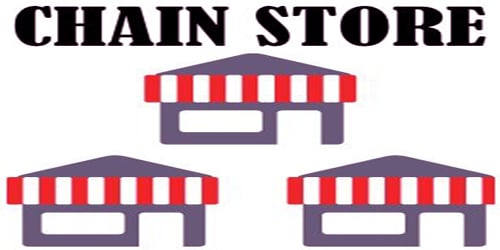Chain stores are a group of retail stores that deal with the same general area of business that operates under the same ownership or management. Chain stores paint a picture of large businesses with vertical integration of modern mass distribution and their strategies have given shape to widespread use. Chain stores serve as an important part of retail activities in the United States, Western Europe, and Japan. Chain stores together with department stores and mail-order companies represent the first successful implementation of a large-scale integrated approach to one-of-a-kind retail. A chain store can only exist in one city or around the world. There are a variety of chain stores ranging from big-box retailers to recommendation stores to restaurant chains.
In 1792, Henry Walton Smith and his wife Anna W.H. As a Newmending business in London, Smith would become a national concern in the mid-19th century under the management of their great-grandson William Henry Smith. For the most part, however, retail chain stores were not significant until the late 19th century. Both Europe and the United States experienced their most significant growth between the 1890s and 1920s. Chain-store companies grew exponentially over the next few decades, both in sales and numbers and by 1929 were 22 percent of total U.S. retail sales. Grocery retail sales and various stores were the most dramatic. In the United States, chain stores were probably started in the 1860s by J. Steiner & Co., which operated several tea shops in New York City. By the 1900s George Huntington Hartford the Great Atlantic and Pacific Tea Company had originally created a tea distributor, New York in a grocery chain that operated about 200 stores. Pressure from small retailers in the 1930s led to legislation that restricted discipline in several European countries, but most laws were repealed after World War II.
Isidore, Benjamin, and Modest Devaktar coined the concept of a chain department store in Belgium in 1868, ten years before A&P began offering more than coffee and tea. They started with four locations for the Mycenaean Deutscher (Deutsche Welle houses): La Louvier, Mons, Namur, and Leuze. The most powerful chains are ready-to-wear garments such as department stores, grocery stores, various limited price stores, gaps, and drug stores. Many banks, hotels, and motion-picture theaters also belong to the chain. These activities gained the loyalty of their customers who translate the chain’s standard practices into more personal, but sometimes more equal, treatment of customers rather than discriminatory service in grocery and department stores. Led by Isidore (and later his son Louis), Myson Devacator will become one of the most recognized names in Belgium and France, with stops in 20 cities and towns. Some cities had multiple stores, such as Bordeaux in France. Chains are able to be purchased on more favorable terms than single-unit stores due to the amount of central unit activity and the ability to bring special purchasing skills to carry out these purchases. Chains can achieve significant economies through joint healing and retail activities within the same business organization, as this structure improves coordination between the two branches and relieves the wholesaler of both credit risk and sales staff requirements. Louis Dewachar also became an internationally known landscape artist by painting under the pseudonym Louis Davis.
The main competitive disadvantages of chain store companies are their centralized direction and their strictly standardized operating methods, which limit the flexibility of individual sales units and hinder useful innovation. Chain stores also offer less customer service than individual stores. The U.S. Supreme Court upheld state taxes on chain stores in 1931, and by 1933, 525 chain-store tax bills had been introduced in the state legislature, and by the end of 1933, special taxes on retail chains had been imposed in 17 states.














